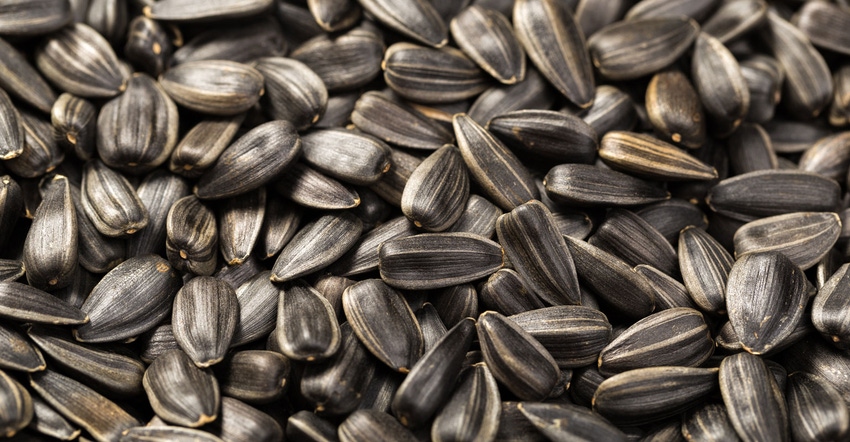
Will sunflower acres increase this year? I wish there was a crystal ball to predict this, but as you know, there isn’t. The jury is still out as to acres increasing or not, but from the chatter I am hearing from both producers and processers that are contracting acres, I would say oil acres will stay the same as last year, with confection acres decreasing slightly.
Increased high-oleic price
Oil sunflower prices have continued to increase throughout this marketing year on strong domestic oil demand and reduced 2020 global sunflower production, which was down 10% from 2019. The shortfall in production is giving a price premium to global sunflower seed and oil prices. Decreased production is expected to reduce the sunflower crush significantly. This has fueled a rise in new-crop oil sunflower prices of 25% to 30% since they first rolled out and are significantly higher than last year at this same time. The increased oil demand has crushers still offering Act of God and cash contracts.
It has been a different story for confection sunflower, as the COVID-19 pandemic has decreased demand domestically and in export markets. The demand loss is partly due to less traveling and thus fewer purchases at convenience stories, sporting events being closed to fans, and social gatherings being curtailed. Until demand returns to normal levels, a reduction in acreage is needed to use up seed stocks, thus likely leading to fewer acres in 2021.
Push toward high oleic
Something else that you will see in 2021 is the continued push toward converting the oil crop from NuSun to high-oleic sunflower. There is a good market for both oils currently. However, trends change, and products need to adapt to consumer preferences. The market wants oils to have zero trans-fat and saturated fat levels at or below 7%.
In addition, food processors want oils to be very stable for extended shelf life and fry life, coupled with a neutral taste profile. High-oleic sunflower oil fits the bill on all counts. While NuSun was a positive move for the sunflower industry in the late 1990s, the increasing market demand for high-oleic oils has convinced oil crushers that the industry needs to adjust again.
Most fundamental news for oil has been positive the past few months. World consumption of oils and fats is expected to exceed production for the second year in a row. Global oil stocks are expected to tighten throughout the remainder of this market year. This is positive news for high oil-bearing seeds like sunflower. It should keep old- and new-crop prices firm into harvest. Last year, sunflower seed prices hit the market high in June and July, and this could happen again this year depending on planted acres and growing-season conditions.
In the months ahead, growing-season weather from North America to the Black Sea region will be the main price setter. The market will also be focusing on South American corn and soybean production and the impact it might have on U.S. exports. To keep tabs on sunflower prices, go to sunflowernsa.com and Follow us on Twitter @NatlSunflower
Read more about:
SunflowersAbout the Author(s)
You May Also Like






